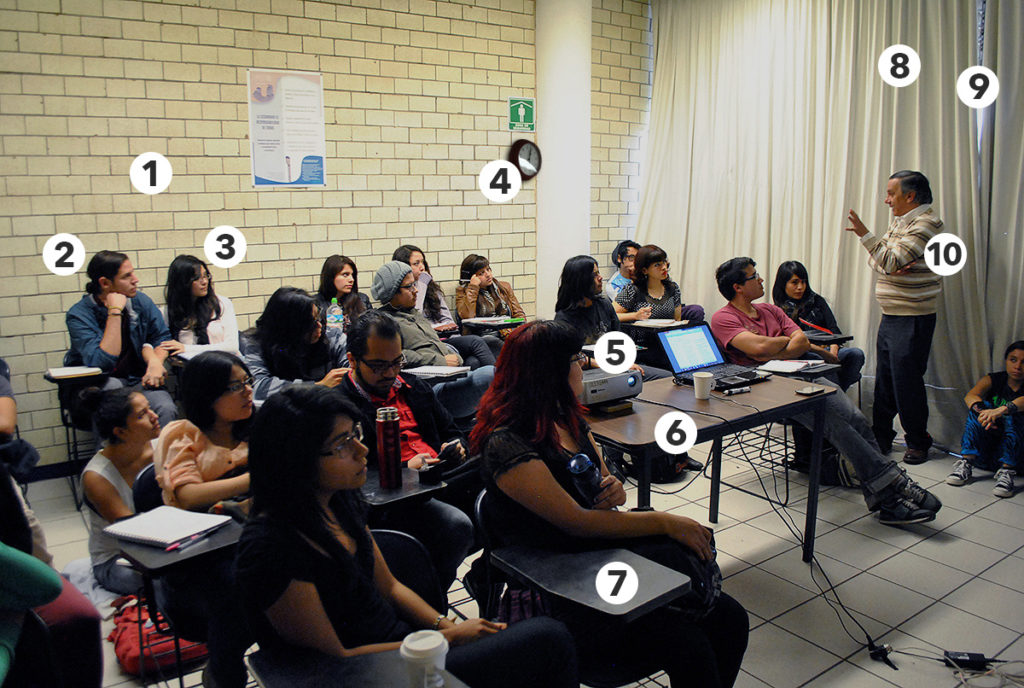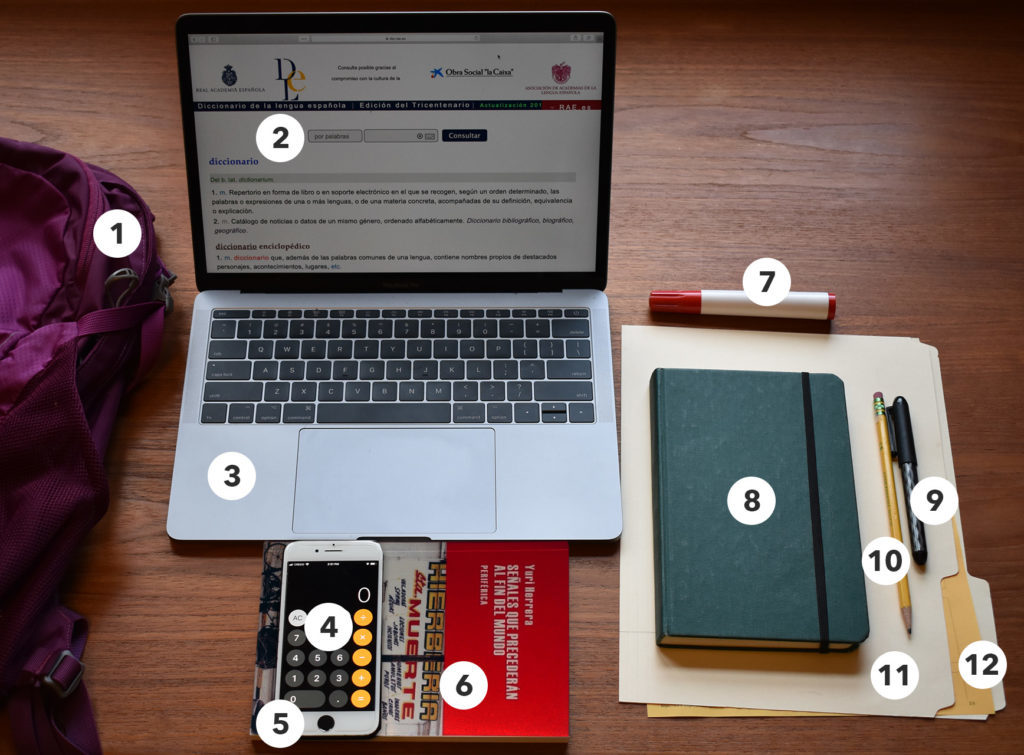4.37: Putting It Together: ¡Hola! ¿Cómo te llamas?
- Page ID
- 50112
Click on each link below for a review summary to help you complete the assignments and prepare for the quiz to demonstrate your mastery of the objectives.
[reveal-answer q=”561028″]Use common greetings and goodbyes, both formally and informally[/reveal-answer]
[hidden-answer a=”561028″]
Saludos y respuestas (Greetings and Responses)
![]() Buenos días Good morning
Buenos días Good morning
![]() ¿Cómo está (usted)? (formal) How are you?
¿Cómo está (usted)? (formal) How are you?
![]() ¿Cómo estás (tú)? (informal) How are you?
¿Cómo estás (tú)? (informal) How are you?
![]() ¿Qué tal? (informal) How’s it going?
¿Qué tal? (informal) How’s it going?
![]() Más o menos So-so
Más o menos So-so
![]() Gracias, ¿y usted? (formal) Thank you, and you?
Gracias, ¿y usted? (formal) Thank you, and you?
![]() Gracias, ¿y tú? (informal) Thank you, and you?
Gracias, ¿y tú? (informal) Thank you, and you?
 Presentaciones (Introductions)
Presentaciones (Introductions)
![]() ¿Cómo se llama usted? (formal) What is your name?
¿Cómo se llama usted? (formal) What is your name?
![]() ¿De dónde es usted? (formal) Where are you from?
¿De dónde es usted? (formal) Where are you from?
![]() ¿Cómo te llamas? (informal) What is your name?
¿Cómo te llamas? (informal) What is your name?
![]() ¿De dónde eres? (informal) Where are you from?
¿De dónde eres? (informal) Where are you from?
Soy de… I am from…![]() Soy de Peru.
Soy de Peru.
Sra. (![]() señora) Mrs.
señora) Mrs.
Sr. (![]() señor) Mr.
señor) Mr.
Srta. (![]() señorita) Miss.
señorita) Miss.
Le presento a … may I present (formal)
![]() Sr. López, le presento a Pablo.
Sr. López, le presento a Pablo.
![]() Esta es… This is… (introducing a female)
Esta es… This is… (introducing a female)
![]() Este es… This is… (introducing a male)
Este es… This is… (introducing a male)
![]() Este es Pablo y esta es María.
Este es Pablo y esta es María.
![]() Te presento a… may I present (informal)
Te presento a… may I present (informal)
![]() Encantado Delighted/Nice to meet you (say if you are male.)
Encantado Delighted/Nice to meet you (say if you are male.)
![]() Encantada Delighted/Nice to meet you (say if you are female.)
Encantada Delighted/Nice to meet you (say if you are female.)
![]() Encantada de conocerte (informal) Nice to meet you
Encantada de conocerte (informal) Nice to meet you
![]() El gusto es mío The pleasure is mine
El gusto es mío The pleasure is mine
Despedidas (Farewells)
![]() Hasta mañana See you tomorrow
Hasta mañana See you tomorrow
[/hidden-answer]
[reveal-answer q=”569597″]Use subject pronouns[/reveal-answer]
[hidden-answer a=”569597″]
In Spanish, the singular subjects are:
| I | |
| you (informal) | |
| you (formal) | |
| he | |
| she |
Plural subjects are:
| we | |
| you (informal in Spain) | |
| they | |
| you all |
*Nosotros (we) has a feminine nosotras that is used when the entire group is composed of females. Likewise, vosotros and ellos have feminine forms vosotras and ellas.
** In Latin America, vosotros is almost unheard of, and ustedes is exclusively used instead for the plural ‘you’ in both formal and informal speaking.
[/hidden-answer]
[reveal-answer q=”376683″]Conjugate and use the verb ser[/reveal-answer]
[hidden-answer a=”376683″]
| ser (to be) | |
| singular | plural |
[/hidden-answer]
[reveal-answer q=”199391″]Use numbers up to 30[/reveal-answer]
[hidden-answer a=”199391″]
Números 1-31
Note: The numbers 16-19 and 21-29 are most commonly spelled as shown above, however, they can also be written as three words. For example “diecisiete” can also be written “diez y siete” according to the Real Academia Española.
[/hidden-answer]
[reveal-answer q=”110434″]Use the verb hay to discuss singular and plural objects in the classroom[/reveal-answer]
[hidden-answer a=”110434″]
 En la mochila del estudiante (in the student’s backpack)
En la mochila del estudiante (in the student’s backpack)
2. ![]() el diccionario (dictionary)
el diccionario (dictionary)
4. ![]() la calculadora (calculator)
la calculadora (calculator)
5. ![]() el teléfono (telephone)
el teléfono (telephone)
9. ![]() el bolígrafo (pen)
el bolígrafo (pen)
10. ![]() el lápiz (pencil)
el lápiz (pencil)
12. ![]() el papel (paper), la hoja de papel (piece of paper)
el papel (paper), la hoja de papel (piece of paper)

En la salón de clase (in the classroom)
Una palabra utíl (a useful word):
El verbo hay
Hay comes from the verb haber and it means “there is.” However, hay is the only form used in the present tense for both singular and plural descriptions, so it also means “there are.”
[/hidden-answer]
[reveal-answer q=”18937″]Use definite and indefinite articles[/reveal-answer]
[hidden-answer a=”18937″]
Definite articles: (the) are used with specific nouns. They also tell us whether a noun is masculine or feminine AND plural or singular. They can be expressed in four ways:
| masculino | femenino | |
| singular | el | la |
| plural | los | las |
- ¿Quién es la profesora de español?
- Necesito el libro de español.
Indefinite articles: (a/an/some) are used with nouns that are not specific or have been previously mentioned. They also state whether a noun is masculine or feminine AND plural or singular. They can be expressed in four ways:
| masculino | femenino | |
| singular | un | una |
| plural | unos | unas |
- Hay una pizarra en el salón de clase.
- Hay unos papeles en mi mochila.
[/hidden-answer]
[reveal-answer q=”88526″]Ask and answer yes/no questions[/reveal-answer]
[hidden-answer a=”88526″]
 La pregunta básica
La pregunta básica
A simple question is typically formatted in the verb / subject / clause format, or a simple inversion of the subject and verb in a standard sentence. Note that unlike English, Spanish does not use the auxiliary verb ‘do/does’ in questions.
| en español | en inglés |
| Does María speak Spanish? |
 Las respuestas
Las respuestas
Responding to all of these types of questions is done in the same format. For “Yes” responses the subject / verb / clause format is retained following the word “yes”.
| Yes, María speaks Spanish. |
There are two ways of making a negative statement: One is to simply negate the statement as in the examples below by placing the no before the verb.
| No, María does not speak Spanish. |
The other is a negation of the statement with an affirmation of a related fact afterwards as shown below.
| No, María speaks English. |
[/hidden-answer]
[reveal-answer q=”418870″]Read a short passage to identify information about hispanics in the United States[/reveal-answer]
[hidden-answer a=”418870″]See the Cultura section in the Study Plan for these activities.[/hidden-answer]
Contribute!
- Repaso de Unidad 1. Provided by: SUNY Oneonta and Lumen Learning. License: CC BY: Attribution


 1.
1.